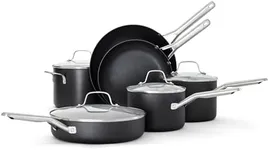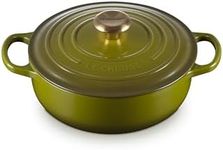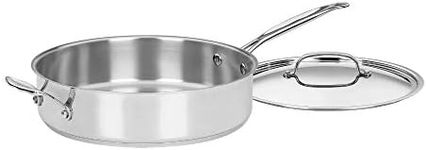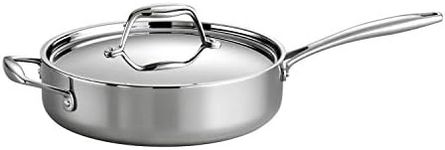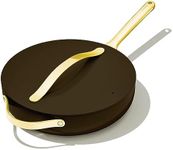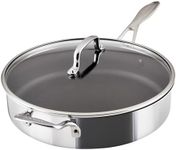Buying Guide for the Best Saute Pans
Choosing the right sauté pan can make a significant difference in your cooking experience. A sauté pan is a versatile piece of cookware that can be used for a variety of cooking methods, including frying, searing, and browning. When selecting a sauté pan, it's important to consider several key specifications to ensure you get the best fit for your cooking needs. Here are the key specs to look out for and how to navigate them.MaterialThe material of a sauté pan affects its heat conductivity, durability, and maintenance. Common materials include stainless steel, non-stick, cast iron, and copper. Stainless steel is durable and resistant to rust but may not conduct heat as well as other materials. Non-stick pans are easy to clean and great for low-fat cooking but can be less durable. Cast iron offers excellent heat retention and even cooking but requires regular seasoning and is heavy. Copper provides superior heat conductivity but is often more expensive and requires more maintenance. Choose a material based on your cooking habits and how much maintenance you're willing to perform.
SizeSauté pans come in various sizes, typically measured in quarts or inches in diameter. Smaller pans (8-10 inches) are suitable for cooking for one or two people, while medium pans (10-12 inches) are ideal for small families. Larger pans (12-14 inches) are best for cooking for larger groups or preparing multiple servings at once. Consider the size of your household and the types of dishes you frequently prepare when selecting the size of your sauté pan.
ShapeSauté pans usually have straight sides, which provide a larger cooking surface and help contain liquids. This makes them ideal for tasks like searing meat or reducing sauces. Some sauté pans have slightly flared sides, which can make stirring and flipping food easier. Think about the types of cooking techniques you use most often and choose a shape that complements those methods.
HandleThe handle of a sauté pan should be comfortable to hold and stay cool during cooking. Handles can be made from various materials, including stainless steel, silicone, and plastic. Stainless steel handles are durable and oven-safe but can get hot. Silicone and plastic handles stay cooler but may not be oven-safe at high temperatures. Some pans also have a helper handle on the opposite side, which can be useful for lifting and maneuvering the pan, especially when it's full. Consider your comfort and how you plan to use the pan when evaluating handle options.
LidMany sauté pans come with a lid, which can be useful for simmering, steaming, and keeping food warm. Lids can be made from glass or metal. Glass lids allow you to monitor your food without lifting the lid, but they can be heavier and more prone to breaking. Metal lids are more durable but require you to lift the lid to check on your food. Decide if having a lid is important for your cooking style and choose the type that best suits your needs.
Oven-Safe TemperatureSome recipes may require you to transfer your sauté pan from the stovetop to the oven. It's important to check the oven-safe temperature of the pan and its handle. Most stainless steel and cast iron pans can withstand high oven temperatures, while non-stick and pans with plastic handles may have lower oven-safe limits. Consider the types of recipes you plan to make and ensure the pan you choose can handle the required oven temperatures.
WeightThe weight of a sauté pan can affect its ease of use. Heavier pans, like those made from cast iron, offer better heat retention and even cooking but can be cumbersome to lift and maneuver. Lighter pans are easier to handle but may not distribute heat as evenly. Think about your strength and comfort level when choosing the weight of your sauté pan.
